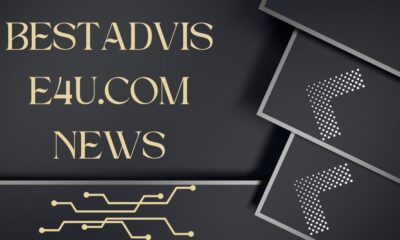Business
Decoding the Differences: Purchase Orders vs. Purchase Requisitions in Business Operations

In business, managing the procurement process well is very important. It’s essential to understand the tools used in this process, like purchase orders and purchase requisitions. These tools are key for effective supply chain management and improving how a business operates. This article will explain these tools, show how they differ, and discuss why it’s important to handle them correctly.
What is a Purchase Requisition?
A purchase requisition is a document used within a company when a department needs to order goods or services. It lists what needs to be bought, how much, and why. It may also suggest a supplier to buy from. This document must be approved internally before the company can place an order with an external supplier.
Key Benefits and Characteristics:
- Detail-Oriented: Specifies the type, quantity, and reasons for the goods or services needed.
- Internal Use: Used for internal approval before contacting suppliers.
- Supplier Recommendations: May recommend preferred suppliers.
- Initiates Procurement: Triggers the start of the procurement process.
- Control and Oversight: Helps manage spending and ensures necessary approvals.
What is a Purchase Order?
In contrast, a purchase order is a formal document that a company sends to a supplier to buy goods or services. It lists what to buy, in what amount, at what price, and when it should be delivered. Once the supplier agrees to the order, it becomes a legally binding contract.
Key Characteristics of Purchase Orders:
- Legal Agreement: It’s a binding contract once accepted by the supplier.
- Details Included: Specifies item descriptions, quantities, prices, and delivery schedules.
- External Use: Sent to suppliers to initiate purchases.
- Formalizes Transactions: Establishes the terms of the purchase officially.
Comparing Purchase Orders VS Purchase Requisitions
Purpose and Use
A purchase requisition is an internal document for getting approval to buy something, used only inside a company. It indicates a need. In contrast, a purchase order is an external document sent to a supplier to start an order. It triggers the actual purchase.
Approval Process
Before a company can issue a purchase order, the purchase requisition needs multiple approvals. This checks that the purchase is necessary and fits the budget.
Legal Impact
A purchase order is a legal promise to pay the supplier once they deliver the goods or services, forming a contract. A purchase requisition has no legal value; it’s just a request within the company.
Document Flow
It’s important to understand how a requisition turns into a purchase order. They have different purposes: the requisition is about internal approval, and the purchase order is about ordering from a supplier. This process ensures everything is checked and approved before any commitment is made externally.
Importance of Distinction
Mixing up these documents can cause problems like unauthorized purchases or spending more than planned. It’s essential for a company to clearly separate the two to prevent these issues. Proper controls and education about these documents are crucial.
Technology Integration
Using technology, like ERP systems, can improve the management of these processes. These systems automate the entire lifecycle of purchase documents, reducing mistakes and saving time. They provide features like electronic approvals and budget tracking, which help enhance procurement efficiency.
Summarizing
The distinction between purchase orders and purchase requisitions, while subtle, plays a crucial role in business operations. Understanding and managing these documents effectively is not just about administrative accuracy; it’s about strategic procurement that aligns with business goals.
Businesses are encouraged to adopt clear policies and invest in robust technology solutions to optimize their procurement processes, ensuring both operational efficiency and financial health.
By demystifying the differences and emphasizing best practices in handling purchase orders and requisitions, companies can enhance their operational capabilities and maintain competitive advantage in the bustling market landscape.
FAQs
What is the main difference between a purchase requisition and a purchase order?
A purchase requisition is an internal document used to request permission within a company to buy goods or services. It does not have any legal binding. On the other hand, a purchase order is an external document sent to a supplier, and it becomes a legally binding contract once the supplier agrees to it.
Who needs to approve a purchase requisition, and why is this important?
A purchase requisition must be approved by designated managers or department heads within the company. This approval process is crucial to ensure that the purchase is necessary and fits within the budget, preventing unnecessary spending and maintaining financial control.
Can a purchase order be altered once it has been issued to a supplier?
Once a purchase order has been issued and accepted by the supplier, it generally cannot be altered without mutual agreement. Any changes would require a new purchase order or an amendment to the existing one, which must be approved by both parties.
What technologies are commonly used to manage purchase requisitions and orders?
Many businesses use Enterprise Resource Planning (ERP) systems to manage purchase requisitions and orders. These systems automate the process, provide real-time tracking, manage approvals electronically, and help in budget monitoring, which enhances overall procurement efficiency and reduces errors.
What are the risks of not clearly distinguishing between a purchase requisition and a purchase order?
Failing to differentiate clearly between these two documents can lead to unauthorized purchases, overspending, and procurement inefficiencies. This confusion can also lead to legal disputes if orders are not properly authorized or if there is a misunderstanding about the binding nature of orders. Proper training and clear procedures must be in place to manage these documents effectively.
These questions and answers aim to clarify the functions and significance of purchase orders and requisitions in business operations, helping businesses optimize their procurement strategies and maintain financial and operational control.
Business
Dialyzer Manufacturing Process: Step-by-Step Guide for Beginners

Dialyzers are a critical component of hemodialysis, a life-saving treatment for patients with kidney failure. Often referred to as “artificial kidneys,” dialyzers remove waste products and excess fluids from the blood when the kidneys can no longer perform these functions naturally. But have you ever wondered how these complex medical devices are made? This article provides a step-by-step guide to the dialyzer manufacturing process, especially designed for beginners and those curious about the medical device industry.
What Is a Dialyzer?
Before diving into the manufacturing process, it’s important to understand what a dialyzer is. A dialyzer is a cylindrical device made up of thousands of hollow fiber membranes. These fibers act as semi-permeable barriers, allowing waste materials and fluids to pass through while retaining essential blood components.
There are two main types of dialyzers:
- Reusable dialyzers
- Single-use (disposable) dialyzers
Both types are manufactured using similar processes, although single-use dialyzers require stricter sterilization and quality assurance.
Step 1: Selection of Raw Materials
The dialyzer manufacturing process begins with sourcing high-quality raw materials. The primary components of a dialyzer include:
- Hollow fiber membranes – usually made from synthetic polymers like polysulfone, polyethersulfone (PES), or cellulose-based materials.
- Plastic housing – typically composed of medical-grade polycarbonate or polypropylene.
- Potting resin – used to secure the hollow fibers inside the dialyzer casing.
Each material must meet strict medical and regulatory standards for biocompatibility, durability, and safety.
Step 2: Hollow Fiber Spinning
The core component of any dialyzer is the hollow fiber membrane. These membranes are produced using a technique called “wet spinning” or “dry-jet wet spinning”, depending on the material.
Process Overview:
- Polymer solution preparation – A synthetic polymer is dissolved in a suitable solvent.
- Extrusion through spinneret – The polymer solution is forced through a spinneret with tiny holes.
- Fiber formation – The extruded solution passes through an air gap and into a coagulation bath, forming hollow fibers.
- Washing and drying – The fibers are rinsed to remove residual solvents and then dried.
The result is thousands of long, hair-like hollow fibers, each with a tiny internal channel through which blood will flow.
Step 3: Fiber Bundle Formation
Once the hollow fibers are produced, they are bundled into a compact group called a fiber bundle. The fibers are cut to a specific length and aligned to ensure uniform flow and surface area.
Key Considerations:
- Fiber length must be consistent to ensure even blood flow.
- The bundle is carefully arranged to maximize contact with the dialysate (dialysis fluid).
This fiber bundle is the heart of the dialyzer.
Step 4: Potting Process
In this step, the fiber bundle is inserted into a cylindrical plastic casing. The ends of the fibers are sealed in place using potting resin.
How Potting Works:
- A biocompatible epoxy or polyurethane resin is poured into the housing around the fiber ends.
- The resin hardens and creates a leak-proof seal, holding the fibers in place.
- After curing, the potted ends are sliced to expose the hollow interior of each fiber, allowing blood to flow freely through them.
This is a delicate step in the dialyzer manufacturing process and must be done with precision to ensure no blockages or contamination.
Step 5: Assembly of Dialyzer Housing
After potting and trimming the fiber ends, the device is assembled:
- Top and bottom caps are added to the dialyzer.
- Blood ports and dialysate ports are attached to their respective sides.
- The full unit is ultrasonically welded or glued for a secure and sterile seal.
Once assembled, the dialyzer closely resembles the final product that will be used in clinical settings.
Step 6: Rinsing and Cleaning
The assembled dialyzer undergoes thorough rinsing to remove any chemical residues, particles, or impurities that may remain from earlier stages.
Methods Include:
- Repeated flushing with purified water.
- Use of controlled temperature and pressure conditions.
- Optional testing with air or gas to detect any leaks or weak seals.
This step ensures the device is clean, functional, and safe for patient use.
Step 7: Sterilization
Sterilization is a critical phase in the dialyzer manufacturing process, especially for single-use dialyzers. Several methods may be used, depending on the dialyzer type and materials:
- Ethylene oxide (EtO) gas sterilization
- Gamma radiation
- Steam sterilization (autoclaving)
The sterilization process must effectively eliminate all microorganisms without compromising the structural integrity of the device.
Step 8: Quality Control and Testing
Every dialyzer must pass rigorous quality control tests before being approved for use.
Tests May Include:
- Leakage and pressure tests
- Membrane integrity checks
- Flow rate measurements
- Biocompatibility testing
- Visual inspections under magnification
Dialyzers that fail any part of the quality inspection are discarded or reprocessed, depending on manufacturing policies.
Step 9: Packaging and Labeling
Once approved, the dialyzers are packaged in sterile, airtight conditions to maintain their integrity during shipping and storage. Labeling includes:
- Manufacturing date and batch number
- Sterilization method
- Instructions for use
- Regulatory certifications (such as FDA or CE mark)
Packaging materials must be tamper-proof and comply with global medical packaging regulations.
Step 10: Distribution
The final step in the dialyzer manufacturing process is distribution. Dialyzers are shipped to hospitals, dialysis centers, and medical suppliers around the world. During transit, they are handled with care to prevent damage or contamination.
Conclusion
The dialyzer manufacturing process is a highly sophisticated and regulated operation that involves multiple stages — from raw material selection to quality control and packaging. Every step is vital to ensure the safety and effectiveness of the final product. For beginners, understanding this process helps shed light on the complexity and precision required to produce one of the most essential devices in modern nephrology.
Whether you’re a medical student, healthcare worker, or someone curious about medical technology, knowing how dialyzers are made offers valuable insight into the world of life-saving devices.
Business
simpcitu Crafting Meaningful Stories with Purposeful Simplicity and Expressive Depth

Introduction
Simpcitu revolutionary writing is a clean literary method that emphasizes clarity, cause, and emotional resonance over complex narratives.Writers the usage of simpcitu techniques want minimalist storytelling even as preserving intensity, originality, and true emotional impact thru planned expression.Every word in simpcitu writing topics deeply, ensuring no sentence distracts from the center message or reader’s journey.This technique celebrates mindful language use, turning modest vocabulary and form into compelling, relatable, and undying storytelling reviews.As writers increasingly are in search of for connection over problem, simpcitu revolutionary writing emerges as a effective and famous stylistic choice.By facts its techniques and philosophy, aspiring authors can refine their voices at the identical time as achieving broader, emotionally invested audiences.Therefore, this article explores the simpcitu style, supplying practical pointers, examples, and insights to empower expressive simplicity.
Understanding Simpcitu
Simpcitu revolutionary writing revolves round stripping away vain elaborations at the equal time as maintaining emotional and narrative substance.
The term “simpcitu” reflects a fusion of simplicity and acuity—readability that sharpens in choice to flattens literary expression.
Writers often confuse simplicity with dullness; simpcitu disproves that by way of proving meaning thrives within leaner, centered sentences.
In simpcitu writing, sentences are direct, clear, but profound, revealing truths without relying on grandiose language or form.
Instead of flowery metaphors or complex plots, simpcitu emphasizes huge issues like love, identification, trade, and vulnerability.
Characters often experience more right due to the fact they act and communicate obviously, simply as actual humans do in some unspecified time in the future of non-public moments.
This style urges authors to simply accept as actual with their message and face up to distractions, anchoring tales in regular, emotionally resonant truths.
innovative writing highlights how less can clearly be greater when each phrase displays cause, clarity, and emotional weight.
Why Simpcitu Resonates with Modern Readers
In contemporary fast-paced global, readers crave clarity, emotional connection, and proper voices over immoderate complexity or decorative language.
Simpcitu meets this name for by way of supplying digestible content material cloth that still leaves a deep emotional effect on the target market.
Unlike verbose narratives that alienate readers, simpcitu invitations each person—irrespective of history—to interact with relatable stories.
Moreover, simpcitu respects readers’ time at the same time as ensuring they soak up powerful messages short and meaningfully with out literary boundaries.
Its accessibility makes it ideal for virtual systems, instructional settings, and informal studying without compromising artistic or emotional rate.
Many famous current writers now incorporate simpcitu strategies in novels, blogs, poetry, and social media storytelling formats.
From flash fiction to personal essays, simpcitu complements emotional accessibility even as encouraging meaningful interpretation and reader connection.
Ultimately, simpcitu endures as it speaks straight away to human reviews with out distractions, embracing reality in its purest form.
Key Principles of Simpcitu Creative Writing
Adopting simpcitu requires intentional writing choices, each reflecting simplicity without losing depth, that means, or stylistic individuality.
Here are the fundamental ideas that guide powerful simpcitu innovative writing, helping writers speak powerfully with fewest terms:
Clarity Over Complexity
Use clean, concise language that conveys meaning correctly with out dropping emotional or narrative intent in immoderate detail.
Purposeful Language
Each phrase must make a contribution charge—put off fillers, redundancies, or vague expressions that dilute the story’s emotional impact.
Emotional Precision
Express characters’ emotions subtly however effectively, trusting the reader to experience deeper that means thru minimal cues.
Authentic Dialogue
Craft talk that feels actual—avoid melodrama or exposition, focusing as an alternative on natural, honest conversation among characters
Universal Themes
Explore problems like love, loss, wish, or identification that go past cultures and backgrounds, fostering immediate reader connection.
Minimalist Structure
Keep shape easy—quick chapters, quick scenes, and targeted paragraphs assist readers stay engaged and emotionally involved.
Consistent Tone
Maintain a steady, reflective, or conversational tone that matches the story’s emotional purpose with out dramatic tonal shifts.
Through the ones standards, simpcitu innovative writing creates literary stories that enjoy each personal and universally profound.
Examples of Simpcitu in Action
To apprehend simpcitu in workout, bear in mind a short passage the use of this minimalist but expressive writing technique:
“He waited through the door, retaining the letter. She in no way got here. The silence felt louder than phrases.”
“Rain fell quietly. No one spoke. They knew good-bye already came about, even earlier than footsteps disappeared down the street.”
These sentences use easy language and form, yet evoke deep emotion and narrative without excessive description or element.
The characters’ critiques emerge obviously, leaving vicinity for the reader’s interpretation even as guiding them emotionally.
Simpcitu writing encourages the reader to fill inside the gaps, forming a more potent, greater personal reference to the fabric.
As proven, you don’t need complex storytelling mechanics to create transferring, unforgettable literary moments and character arcs.
Instead, believe the story to unfold sincerely via carefully decided on, emotionally weighted terms and meaningful silence.
How to Practice Simpcitu Writing Dail
To master simpcitu progressive writing, include daily habits that sharpen readability, emotional interest, and minimalist storytelling intuition.
Here are numerous effective practices to help embed simpcitu techniques into your normal writing regular and innovative process:
Write One Sentence Stories
Condense a whole story into one sentence, forcing clarity, emotional resonance, and significant word preference from the start.
Edit Ruthlessly
Review your paintings by means of reducing some thing needless—adjectives, talk tags, or passive buildings that reduce effect.
Read Simpcitu WritersRead authors who embody this style—Raymond Carver, Lydia Davis, or maybe Ernest Hemingway’s sparse but impactful prose.
Use Writing Prompts
Practice with activates targeted on regular research—breakups, waiting, pleasure, or loss—to refine proper, grounded storytelling.
Avoid Overexplaining
Resist explaining the whole thing. Let readers interpret through movement, emotion, and diffused detail rather than direct exposition.
Reflect Daily
Write a few sentences every day reflecting on an emotion, event, or moment using best important, vivid language.
By always attractive these strategies, your writing will glaringly align with the beneficial clarity simpcitu revolutionary writing promotes.
Benefits of Writing with Simpcitu Style
Adopting simpcitu creative writing offers numerous non-public, expert, and innovative blessings that beautify popular storytelling capacity.
Writers regularly locate themselves extra assured, focused, and emotionally attuned after embracing simpcitu requirements in each day paintings.
Here are the most treasured benefits simpcitu writing brings to each new and professional writers for the duration of all genres:
Stronger Reader Connection
Direct emotional expression permits readers to right now have interaction and relate, growing tale impact and memorability fashionable.
Enhanced Clarity and Confidence
Simpcitu builds self assurance via supporting writers communicate actually, keep away from distractions, and believe their particular narrative voice.
Faster Writing Process
With fewer distractions and centered language use, drafting and revising takes an awful lot much less time without sacrificing story first-class.
Versatile Application
Simpcitu strategies beautify all kinds of writing—from novels to emails—via promoting readability, cause, and inexperienced storytelling.
Greater Emotional Insight
This technique cultivates introspection, supporting writers deliver emotional truths with empathy, subtlety, and lasting resonance.
By embracing simpcitu, writers advantage important skills that boom their art work all through mediums at the identical time as staying proper to their voices.
Challenges and How to Overcome Them
Although simpcitu gives many strengths, writers also can face challenges transitioning from complex writing to practical simplicity.
Here are not unusual hurdles and actionable techniques to triumph over them efficiently at some point of your simpcitu innovative writing adventure:
Fear of Losing Depth
Simplifying doesn’t advise dumbing down—recognition on emotional reality, and the depth will naturally stay robust and real.
Struggling with Word Choice
Build vocabulary deliberately, choosing words which is probably every precise and evocative without overwhelming the sentence.
Overediting Your Voice
Simplicity must reflect your style—don’t strip your voice; refine it at the same time as preserving your actual tone and rhythm.
Reader Misinterpretation
Trust your target marketplace. Let silence, implication, and context supply that means with out spelling out each emotion or occasion.
Breaking Old Habits
Consistent exercising is fundamental—commit time every day to put in writing honestly, replicate, and revise using simpcitu standards as your manual.
Every undertaking offers an opportunity to sharpen your storytelling even as developing a deeper relationship with the written phrase.
Conclusion
Simpcitu innovative writing invitations writers to sluggish down, have a look at, and unique with clarity, purpose, and emotional authenticity.
It rejects unnecessary embellishments, converting them with resonant, sincere storytelling that deeply engages the human revel in.
Each sentence turns into a vessel for feeling, reminiscence, and connection, speaking louder thru simplicity than complexity ever need to.
In our chaotic digital age, simpcitu offers easy calm—tales rooted in heart, stripped of noise, and full of cause.
Writers who encompass this style create work that lives longer in minds, no longer for its length however for its which means.
Through readability, emotion, and take delivery of as genuine with in language, simpcitu fosters genuine connection among creator, story, and reader alike.
So select up your pen, breathe deeply, and write now not with extra—but with which means, purpose, and unwavering innovative simplicity.
Business
How to Make Meme Coins in 2025: Beginner’s Guide

Introduction
Ever scrolled via Twitter and thought, “How to Make Meme Coins in 2025?” You’re not by yourself, friend. Meme cash exploded onto the scene like a viral TikTok video—silly, spontaneous, and in some way very rewarding. Whether it’s Dogecoin’s Shiba appeal or PEPE’s inexperienced glory, meme coins have emerged as the underdog heroes of the crypto global.
Now, in 2025, growing your personal meme coin is more possible than ever. You don’t want to be a tech wizard—simply have a groovy idea, simple tools, and a meme-worthy vision. Ready to experience the meme wave? Let’s dive properly into how you can create your very own meme coin from scratch.
What Is a Meme Coin?
A meme coin is a cryptocurrency inspired by using memes, jokes, or pop culture with regularly no critical challenge to the historical past. These coins are usually created for amusement, yet they could gather big communities and crazy valuations. Think of meme coins just like the pranksters of the crypto magnificence—humorous, chaotic, but especially famous.
Is Launching Your Own Meme Coin Worth It?
That depends on your dreams. Are you in it for a laugh, repute, or fortune? If you like net subculture, revel in building communities, and aren’t fearful of virtual roller coasters, meme coins may be rewarding. They’re low-barrier, community-driven, and sometimes wildly worthwhile. But remember—it’s now not all rainbows and rocket emojis.
Benefits of Meme Coins
Easy Entry Point:
You don’t need a PhD in blockchain. Platforms now provide easy gear to help beginners release coins effortlessly.
Viral Potential:
A smart call, meme, or slogan can assist your coin in going viral in crypto circles and even mainstream media.
Community Power:
Strong meme cash thrives on enthusiastic groups that push the hype and construct brand loyalty.
Fundraising Made Fun:
Tokens may be bought or talented at some stage in launches, assisting you in raising capital or growing your person base quickly.
Risks and Challenges Involved
Volatility Galore:
Prices can bounce, crash, or disappear in a single day—your coin’s fate may also hinge on one influencer’s tweet.
Regulatory Uncertainty:
Crypto legal guidelines vary globally. Launching without knowledge of criminal implications could land you in hot water.
Short-Lived Attention:
Internet developments change quickly. Today’s trending coin may be tomorrow’s forgotten virtual relic.
Tech Glitches:
A defective settlement can damage everything. Smart contract errors have led to misplaced price ranges and ruined tasks.
How Much Does It Cost to Start a Meme Coin?
Creating a meme coin can cost as low as $100 or soar past $10,000 based on functions and promotions. Here’s a basic breakdown:
- Smart Contract Development: $200–$5,000
- Blockchain Fees (Gas): $50–$300
- Listing Fees (DEX/CEX): $100–$10,000
- Marketing & Promotion: $500–$10,000
- Legal & Compliance: $0–$3,000
Budget well, but don’t bypass crucial stuff like audits or legal assessments. Think of it as launching a product, no longer only a prank.
Step-by using-Step: How to Create a Meme Coin
Define the Concept
Pick a meme, a comic story, or a cultural reference people relate to. A catchy call and humorous backstory are essential. Imagine your coin as a logo—might human beings put it on a T-shirt?
Choose the Right Blockchain
Ethereum, BNB Chain, and Solana are top choices in 2025. They offer smart agreement compatibility, speedy transactions, and big groups.
- Ethereum: Secure and popular, but gasoline fees are better.
- BNB Chain: Cheaper and faster, first-rate for beginners.
- Solana: Lightning-speedy and green, perfect for scalability.
Develop and Deploy the Smart Contract
A smart agreement is the brain of your coin. It handles supply, transactions, and rules. Use gear like
- Remix IDE (Ethereum)
- Solana Studio
- PinkSale Launchpad
Hire a developer or use templates—however, always get the settlement audited before going live.
Decide on Distribution and Fundraising
Will you do an airdrop? Pre-sale? Fair launch? Plan your tokenomics—how much goes to the team, community, development, and liquidity pools. Make sure it’s transparent and balanced.
List Your Coin on Exchanges
Start with decentralized exchanges (DEXs) like PancakeSwap or Uniswap. Once you gain traction, apply for centralized exchanges (CEXs) like Gate.io or BitMart. Listing builds credibility and liquidity.
Market Your Meme Coin Creatively
This is in which memes rule! Create funny content material, start viral demanding situations, use social media, and partner with influencers. Think like Wendy’s Twitter—amusing, sassy, and meme-worthy.
Add Value Beyond the Hype
Give humans a purpose to preserve your coin past laughs. Create NFTs, play-to-earn video games, network rewards, or donations. Build capabilities that interact with customers continuously.
Comply with Regulations
In 2025, regulators are watching. Get a prison recommendation to make certain your coin doesn’t count as a protection. Stay obvious and include disclaimers to avoid future troubles.
Best Meme Coin Generators in 2025
If coding sounds horrifying, use these novice-pleasant generators:
- CoinTool App: No-code interface for launching ERC-20 or BEP-20 coins.
- PinkSale Finance: Offers token advent, pre-income, and liquidity locks.
- DxLaunch: Great for Solana tokens, with integrated anti-bot capabilities.
- Unicrypt: Adds superior DeFi features to meme tokens.
- TokenMint: Offers drag-and-drop smart settlement design with pre-constructed meme templates.
Choose a platform that fits your technical competencies, price range, and blockchain choice.
Conclusion
Launching a meme coin in 2025 is like creating your personal internet internal funny story with million-dollar punchlines. While meme coins may also begin as amusing, they could snowball into influential virtual assets. The key? Combine creativity, tech-savviness, and robust network vibes.
So, are you ready to move from meme dreamer to meme coin founder? The crypto international is awaiting your masterpiece. Just don’t forget to meme responsibly.

 Lifestyle10 months ago
Lifestyle10 months agoExploring the Wonders of myfavouriteplaces.org

 Technology1 year ago
Technology1 year agoUnlocking the Mystery of 02045996870: What You Need to Know

 Sports1 year ago
Sports1 year agoExploring the Intersection of Sports Fashion and Personalized Design

 Sports1 year ago
Sports1 year agoElevate Your Game with Custom Tennis Fashion from Áo Tennis Thiết Kế

 Business1 year ago
Business1 year ago10 Changes to Make in Your Ecommerce Website to Reduce Cart Abandonment and Boost Sales

 general2 years ago
general2 years agoEmbracing the Enigma of örviri

 Entertainment1 year ago
Entertainment1 year agoEvolution of News Consumption: bestadvise4u.com as Your Go-To Source

 Technology1 year ago
Technology1 year agoEnhancing Security with Innocams: A Comprehensive Guide
















